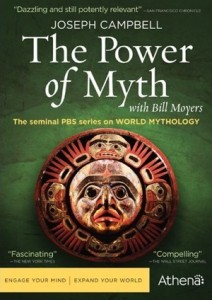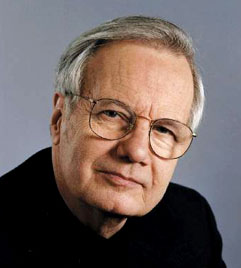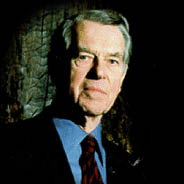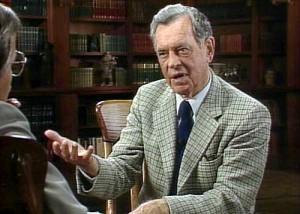 Long-running PBS TV series comes to DVD
Long-running PBS TV series comes to DVD
“I don’t believe people are looking for the meaning of life as much as they are looking for the experience of being alive.” — Joseph Campbell
It was many years ago that I first encountered on PBS a certain professor from Sarah Lawrence College in Bronxville, New York. The name of the college, perhaps, will not ring many familiar bells but maybe the name of the professor will. Joseph Campbell. He taught at the college for nearly forty years, and he stimulated his students, as he did the TV audience, despite the unusual academic subject. No, it wasn’t stuffy, which is usually what “academic” conjures up—not to him; it was a very real part of his life, and, in sharing his enthusiasm and imagination, he opened a new world to those who heard him.
His subject? Myths.
These myths, as Campbell saw them, could be about anything. Everything. They are blended, all equally, and merging into some kind of convincing whole, a genuine part of not only his personal world but, as he persuaded, existing in all that is around us. Among them, gods and goddesses (the supposed “real” ones as well as the mythological); the supernatural and the secondary divinities; actual personages, concepts and events tied to history: the Buddha and Eros, even Christ; an American Indian shaman and the Madonna; James Joyce, morality and the Big Bang.
“Read myths. They teach you that you can turn inward, and you begin to get the message of the symbols. Read other people’s myths, not those of your own religion, because you tend to interpret your own religion in terms of facts—but if you read the other ones, you begin to get the message.”
 On six consecutive evenings, in June 1988, journalist and commentator Bill Moyers talked with Campbell about “The Power of Myth,” lending his enthusiasm, as he does to everything, but also getting caught up himself in the professor’s fascinating take on the essence of life and death. On TV, such a quiet, intellectual—deep, actually—concept was rare even then, more so now. Moyers has tried, in later years, to maintain this level of interest in across-the-table interviewing with his Journal, particularly on politics, economics, religion and esthetics, though with opposition from some political groups.
On six consecutive evenings, in June 1988, journalist and commentator Bill Moyers talked with Campbell about “The Power of Myth,” lending his enthusiasm, as he does to everything, but also getting caught up himself in the professor’s fascinating take on the essence of life and death. On TV, such a quiet, intellectual—deep, actually—concept was rare even then, more so now. Moyers has tried, in later years, to maintain this level of interest in across-the-table interviewing with his Journal, particularly on politics, economics, religion and esthetics, though with opposition from some political groups.
 These six, hour-long conversations, with art work visuals—highlights are Chartres Cathedral and William Blake’s paintings—are part of a two-disc DVD set from Acorn Media/Athena. A never-before-released Campbell interview from Bill Moyers’ Journal is included, plus a Moyers biography. A twelve-page viewer’s guide features a Campbell biography, an essay on mythology in everyday life, profiles of artists who were influenced by him and animal symbolism in myths.
These six, hour-long conversations, with art work visuals—highlights are Chartres Cathedral and William Blake’s paintings—are part of a two-disc DVD set from Acorn Media/Athena. A never-before-released Campbell interview from Bill Moyers’ Journal is included, plus a Moyers biography. A twelve-page viewer’s guide features a Campbell biography, an essay on mythology in everyday life, profiles of artists who were influenced by him and animal symbolism in myths.
There are also excerpts from the film Sukhavati, a portrait of mythology and its stories in Campbell’s own words, compiled, with appropriate art and music, by Maxine Harris and Sheldon Rocklin after the scholar’s death. Of particular interest to movie fans, Moyers has a short interview with George Lukas, who credits Campbell with the inspiration for Star Wars, which is so myth oriented. After all, what is “The Force” but some kind of mystical, intrinsic power.
Joseph Campbell was already suffering from cancer during the interviews and died seven months before they were aired.
A Sacred Place
“This is a term I like to use, now, as an absolute necessity for anybody today. You must have a room, or a certain hour a day or so, where you do not know what was in the newspapers that morning. . . . [Find] a place where you can simply experience and bring forth what you are, and what you might be. This is a place of creative incubation. . . . Where is your bliss station? Try to find it. Get a phonograph and put on the records—the music—you really love, even if it’s corny music that nobody else respects. I mean the one you like, or the book you want to read. Get it done and have a place in which to do it.”— Joseph Campbell in his interview with Bill Moyers
Campbell was a deeper thinker than is evident in these interviews. There is the sense that he has conditioned his delivery and thinking—soften it—to accommodate a wider, less intuitive audience. The scholar and lecturer was, after all, inspired by such intellectuals as Schopenhauer, Nietzsche and Freud, and referred to them in both his writings and during these interviews.
 Although Campbell covers the symbolism of the Crucifixion—he is inclined to disregard it as an actual event—and the essence of the Catholic mass, he just as easily absorbs and justifies the Buddha, fairy tales, Jung’s symbolism of the circle, the Sacred Earth, Old Time Religion, Nietzsche’s three metamorphoses of the spirit and the Upanishads. Together, they are all part of a whole to him.
Although Campbell covers the symbolism of the Crucifixion—he is inclined to disregard it as an actual event—and the essence of the Catholic mass, he just as easily absorbs and justifies the Buddha, fairy tales, Jung’s symbolism of the circle, the Sacred Earth, Old Time Religion, Nietzsche’s three metamorphoses of the spirit and the Upanishads. Together, they are all part of a whole to him.
In all this blurring, many people, brought up to see these seemingly diverse elements as inherently separate, some as intensely true as others are just as intensely false, will be puzzled, perhaps offended, by Campbell’s viewpoints and analyses. For example, he interprets religious stories—of any religion—as simply variations of myth and attributes human qualities to animals and objects (anthropomorphism). That he doesn’t advocate, nor bow down to a single named God, whether of Hindu, Christian or Islamic concoction, will, perhaps, shock many. The Judeo-Christian version of the creation in the opening of Genesis is, to him, as it is to most rational individuals, an allegorical explanation of how the world began. Campbell, in fact, discusses at length the creation legends of different cultures—and they all have one.
“Follow your bliss. If you do follow your bliss, you put yourself on a kind of track that has been there all the while waiting for you, and the life you ought to be living is the one you are living.”